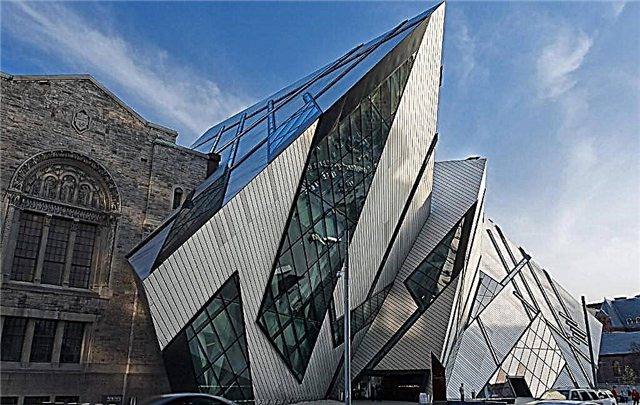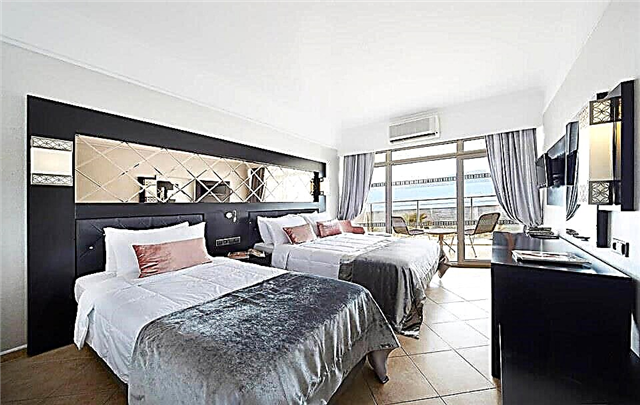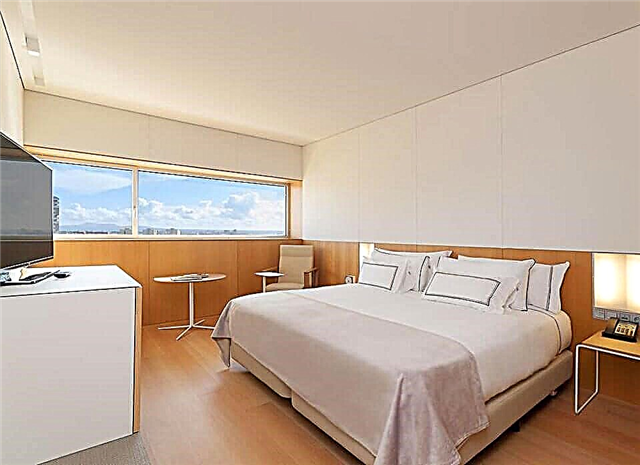Address: Russia, Moscow, Cathedral Square of the Moscow Kremlin
Start of construction: 1484 year
Completion of construction: 1485 year
Shrines: iconostasis
Coordinates: 55 ° 45'02.9 "N 37 ° 36'59.9" E
Cultural heritage site of the Russian Federation
Content:
This small, one-domed and very beautiful church is a real treasure of the Cathedral Square of the Moscow Kremlin. It is located west of the Assumption Cathedral. By tradition, services are held here only once a year, on the patronal feast of the Position of the Robe of the Virgin in Blachernae - July 15, in a new style.
How did the Feast of the Robe Deposition come about?
The origin of this church celebration was the year 471, when two Byzantine dignitaries, the brothers Galbi and Candide, made a pilgrimage to the holy Palestinian places. They decided to spend the night in Nazareth, in the house of a woman. They accidentally discovered the ark with the clothes of the Virgin Mary.

View of the church from Cathedral Square
From the hostess of the house, the pilgrims learned the history of the origin of this shrine, preserved by many generations of this family, and that, thanks to the robes of the Mother of God, various miracles and healings have been performed in the house for several centuries.
According to one version, the emperor and patriarch of Constantinople begged to transfer the shrine to the church. According to another, more widespread church tradition, the brothers themselves secretly kidnapped Riza. They measured the ark with the clothes of the Mother of God, made a copy of it in Jerusalem, and on the way back, returning from Palestine to Constantinople, replaced the shrine.
So the Clothes of the Mother of God got to the capital. And for Riza, a special temple was built in Blachernae, a northwestern suburb of Constantinople, located on the shores of the bay of the same name. Here the shrine was kept together with the belt of the Mother of God and the revered icon with Her face.
Church legends say that so many miracles were performed in the Blachernae temple that no temple in the world could contain all the books in which these miracles were described. The most unusual miracle happened in 860, when, after a procession with the Robe of the Mother of God and the prayer of Emperor Michael III, a large army led by the Varangian Askold reigning in Kiev retreated from Constantinople and concluded a peace treaty with him. Moreover, Askold himself was later baptized under the name Nikolai and contributed to the spread of Christianity in Russia.

View of the church from the north
In 1434 there was a great fire in Constantinople, the Blachernae church was destroyed, and further information about the vest is lost. According to church legends, only small parts of it are known, located all over the world. So, at the end of the 15th century, a piece of the Robe of the Mother of God was acquired for the Russian Church by Dionysius, Archbishop of Suzdal.
A little later, on the Feast of the Position of the Robe of the Virgin in Russia, a miracle also happened. This happened on July 2 (or 15), 1451, during the reign of Vasily II the Dark. It was on this day that the steppe nomads were driven away, under the leadership of the Nagai prince Mozavshi, who went to seize Russian lands. The Tatars suddenly laid siege to the city. The tsar fled for Dubna. All the townships were burned. Those besieged in the Kremlin were suffocating from the smoke. But the first attack was repulsed. And in the morning, when the smoke cleared, it suddenly turned out that the Tatars had suddenly left, leaving behind all the plundered booty.
History of the construction of the Church of the Position of the Robe of the Mother of God in Blachernae
In memory of this saving miracle - the intercession of the Mother of God against the Tatar invasion, the Church of the Deposition of the Robe was built in the Kremlin with the assistance of Metropolitan Jonah. The first church was wooden. But it was destroyed by a great fire that happened in Moscow in 1473. Later, under Metropolitan Gerontius, during the grandiose restructuring of the Kremlin, in two years the craftsmen hired in Pskov erected a stone church, completing the construction by 1486.

For a long time, the Church of the Robe was used as a house for the metropolitans, and later for the Moscow Patriarchs. But when in the middle of the 17th century, during the time of Patriarch Nikon, another house church was erected in memory of the Twelve Apostles, the Church of the Robe became a palace church. It was used by the Russian autocrats for private, home prayer.
At the same time, in the 17th century, the temple was rebuilt, covering it with a four-pitched roof. And the porches that had been opened earlier, located to the west and north of the church, were blocked with vaults. The resulting covered gallery began to serve for the tsarina and princesses to move from the Terem Palace to the Assumption Cathedral.
In its later history, the temple was badly destroyed twice. For the first time - during the great Trinity fire in 1737. After him, the temple was restored under the guidance of the architect I.F. Michurin. For the Church of the Robe, a new helmet-shaped golden dome was made and the windows of the altar were cut.
And the second time - during the shelling of the Kremlin buildings in 1918. But like all the churches of the Kremlin, this church was restored, but not left for religious services, and in 1965 a museum was opened here.
Architectural features and interior of the Church of the Position of the Robe of the Mother of God in Blachernae
The Church of the Deposition of the Robe is one of the most beautiful buildings in Moscow. This is a three-apse temple, which stands on a high basement floor - the basement. The vaults are supported by four pillars. The three sides of the church are decorated with a frieze. And on the south side there is a portal with columns, where a high porch leads. The temple was built of bricks, which replaced the traditional building material at that time - white stone. The monumental volume of the walls is completed by graceful keeled zakomars. This church has become a kind of fusion of the traditions of Moscow and Pskov architecture.

Church of the Deposition of the Robe against the background of the Verkhospassky Cathedral
The peculiarity of the temple interior is that it was all made at the same time, in complete stylistic and artistic unity. During the rebuilding of the church, in 1627, Moscow craftsmen, under the guidance of one of the best court icon painters Nazariy Istomin, made a beautiful four-tier iconostasis for the church, framed in a silver setting - a real work of art!
The walls of the temple were painted with frescoes on church and biblical themes by the most famous masters of their time - Ivan Borisov, Sidor Pospeev and Fedor Abramov for three months in 1644. This painting was revealed from later layers during restoration work carried out in the middle of the last century. There are few monuments of this kind in Russia.
Museum collection of the Church of the Laying of the Robe of the Mother of God in Blachernae
Since 1990, the Church of the Deposition of the Robe as part of the architectural ensemble of the Kremlin has been included by UNESCO in the list of World Cultural Heritage. The building itself, executed in graceful proportions, and its chamber interior decoration are a real museum value. In addition to the iconostasis, a chandelier was made by the famous master D. Sverchkov in the 17th century. A little later, four wooden candlesticks were made, painted with paints and covered with wax. Above the stairs of the temple, you can see the restored paintings of the 19th century.
In addition, the northern gallery of this church houses an exhibition of carved wooden sculptures made by Moscow, Pskov, Rostov and Novgorod masters of the 15th-19th centuries. In the Church of the Robe, you can see old wooden reliefs with the faces of saints, icons and small crosses and folds.

The museum collection includes about 80 unique exhibits. It gives a complete picture of how this type of church art developed. The unusual forms of the wooden sculpture exhibited here and the original artistic solutions of the carvers speak of powerful traditions rooted in antiquity.
The temple itself is protected as an architectural monument of the second half of the 15th century. You can visit here every day, except Thursday, from 10.00 to 17.00.
In honor of the Deposition of the Robe, many churches have been built in Russia, but the temple in the Moscow Kremlin is the most famous. Its graceful and compact forms continue to serve as examples of architectural solutions for religious buildings of the Orthodox Church.











